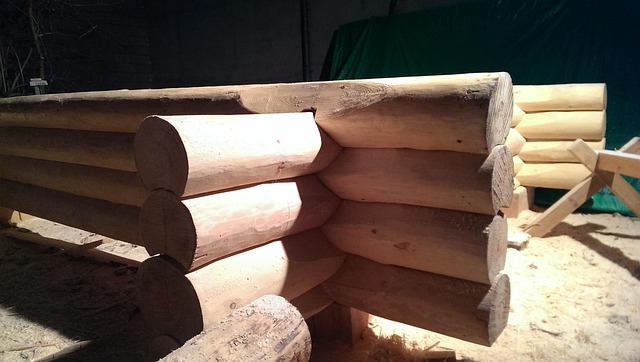Steeline Roofing Centre Bendigo stands as a premier provider of high-quality Colorbond® roofing solutions in the Bendigo region. With a commitment to durability, aesthetic appeal, and customer satisfaction, the centre offers a comprehensive range of products and services tailored to meet the diverse needs of residential and commercial clients.
Understanding Colorbond® Roofing

Colorbond® steel is renowned for its strength, longevity, and wide array of colour options. Designed to withstand Australia’s harsh climatic conditions, it offers excellent resistance to corrosion, chipping, and peeling. Its thermally efficient properties also contribute to energy savings, making it a preferred choice for sustainable building practices.
Steeline’s Expertise in Colorbond® Solutions
At Steeline Roofing Centre Bendigo, clients benefit from a team of experienced professionals dedicated to delivering top-tier roofing solutions. The centre provides an extensive selection of Colorbond® profiles and colours, ensuring that every project aligns with the client’s architectural vision and functional requirements. Their expertise ensures precise installation and long-lasting performance.
Comprehensive Product Range
Beyond roofing, Steeline offers a variety of products to complement and enhance building projects. This includes metal fascias, gutters, flashings, insulation, and translucent sheeting options. All accessories are available in colours matching the Colorbond® range, ensuring a cohesive and polished finish for any structure.
Commitment to Quality and Innovation
Steeline Roofing Centre Bendigo prides itself on sourcing materials from reputable manufacturers and employing advanced manufacturing techniques. This dedication to quality ensures that clients receive products that not only meet but exceed industry standards. Their innovative approach allows for customised solutions, catering to unique project specifications.
Serving the Bendigo Community
Located at 6 Harrien Court, Bendigo, VIC 3551, Steeline Roofing Centre is deeply rooted in the local community. Their understanding of regional building requirements and environmental factors enables them to provide tailored advice and solutions. Clients can reach the centre at (03) 5448 5240 or via email at [email protected] for consultations and inquiries.
Conclusion
Steeline Roofing Centre Bendigo exemplifies excellence in providing Colorbond® roofing solutions. Their comprehensive product range, expert team, and commitment to quality make them a trusted partner for all roofing needs in the Bendigo region. Whether embarking on a new construction project or renovating an existing structure, clients can rely on Steeline for durable, aesthetically pleasing, and efficient roofing solutions
Colorbond roofing sheets offer exceptional durability, aesthetic appeal, and a 40-year warranty due to their Australian-made zinc-aluminium alloy coating. Steeline Bendigo provides local supply and expert guidance on selection, installation, and…….
Steeline Bendigo offers comprehensive Colorbond warranties covering defects like corrosion, rust, impact damage, and structural failures. The 25-year standard warranty ensures long-term protection. Regular maintenance, including annual inspectio…….
Colorbond roofing from BlueScope Steel is a popular choice in Bendigo for its exceptional durability and strength. Its unique manufacturing process combines high-quality steel with an aluminium coating, providing superior corrosion and rust resi…….
Steeline Roofing Centre Bendigo provides expert Colorbond roofing solutions for residential and commercial projects, offering high-quality workmanship, top-tier warranties, comprehensive maintenance support, and customer peace of mind through in…….
Colorbond roofs offer sustainable, stylish solutions for energy-conscious homeowners, with advanced coating technology enhancing reflectivity and durability. Steeline Roofing Centre Bendigo specializes in expert installations, catering to reside…….
Steeline Roofing Centre Bendigo offers tailored commercial steel roofing solutions using durable Colorbond steel. With expertise in local climate conditions, they provide long-lasting, aesthetically pleasing finishes. Steeline's extensive r…….
Bendigo's continental climate demands robust roofing solutions. Colorbond steel roofs offer superior durability, wind resistance, corrosion protection, and UV defense against intense Australian sunlight. With high-tensile strength, water re…….
Bendigo residents trust Steeline for affordable, durable Colorbond roofing solutions. Their expertise in metal roofing ensures high-quality, long-lasting results with minimal maintenance. The aluminium coating protects against harsh weather, and…….
“Discover affordable, high-quality Colorbond roofing solutions tailored for Bendigo’s unique climate. Steeline’s expertise enhances the durability and aesthetics of this popular choice, offering a range of cost-effective options for local homes……..
Colorbond roofing is a popular modern choice for its durability and aesthetic appeal. Steeline Bendigo specializes in custom Colorbond designs, offering versatile options from minimalist to dynamic styles. This material mimics traditional looks…….
Steeline Roofing Centre Bendigo offers expert roofing solutions tailored to local climate and architectural styles. Using high-quality Colorbond steel, they provide durable and aesthetically pleasing installations with exceptional customer servi…….
Bendigo's diverse climate demands durable roofing like Colorbond steel roofs, offering superior strength, weather resistance, temperature management, and corrosion protection against heavy rainfall, intense sun, and humid conditions. Choosi…….
Colorbond roofing is Australia's top choice for bushfire zones due to its exceptional fire resistance. Manufactured with an aluminum coating, it creates a robust barrier against heat and flames, enhancing strength and slowing heat transfer……..
Steeline Roofing Centre Bendigo offers specialized Colorbond roofing services with comprehensive warranties and expert maintenance support. Their team provides installation, repair, and routine care, ensuring long-lasting and aesthetically pleas…….
Steeline Roofing Centre Bendigo offers durable and aesthetically versatile Colorbond roofing solutions for various architectural styles. With a wide colour palette, they provide customised designs enhancing property value through both structural…….
Steeline Roofing Centre Bendigo offers modern Colorbond roofing solutions tailored to the region's unique needs, enhancing curb appeal and property value with durable, low-maintenance options that withstand Bendigo's weather patterns……..
Colorbond steel roofing is a top choice in Bendigo due to its durability, weather resistance, and aesthetic versatility. Steeline Roofing Centre offers expert installation, consultation, and aftercare using high-grade Colorbond products tailored…….
Colorbond roofing is a top choice for Bendigo residents due to its superior durability, aesthetic appeal, and performance in diverse climates. Steeline offers high-quality Colorbond solutions at affordable prices, with expert installation and co…….
Steeline Roofing Centre Bendigo revolutionizes traditional roofing with custom Colorbond steel designs, blending functionality and visual appeal. Their versatile material offers endless color and style options, transforming roofs into striking s…….
Steeline Roofing Centre Bendigo offers superior Colorbond roofing systems tailored to local climates and conditions for farms and industrial buildings. Backed by expert professionals and high-quality materials, our durable, aesthetically pleasin…….




















